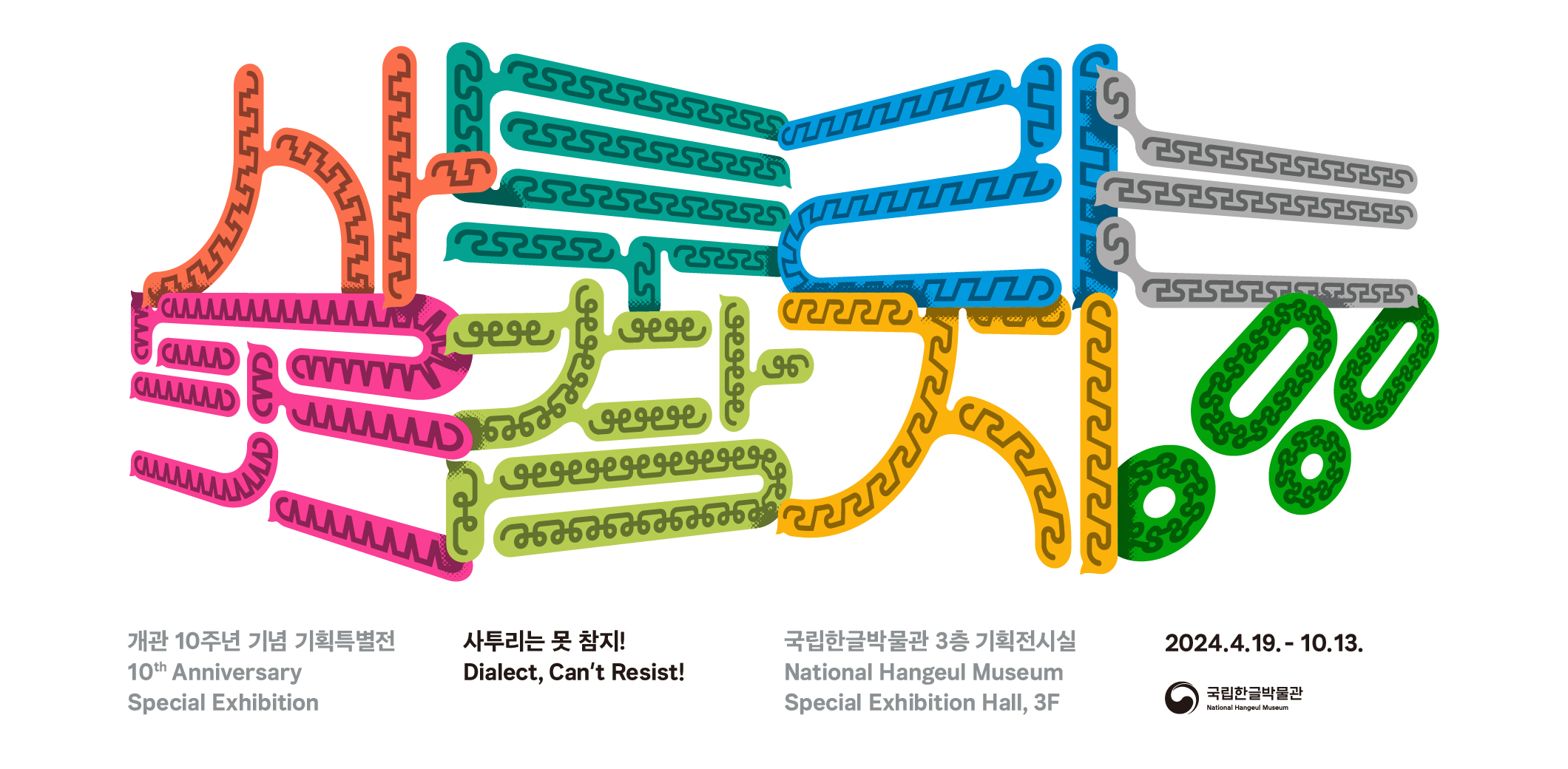Exhibitions
Special Exhibitions
Home > Exhibitions > Special Exhibitions
Dialect, Can't Resist!
- Date
- 2024-04-19~2024-10-13
- Location
- Special Exhibition Hall (3F)

In celebration of its 10th anniversary, the National Hangeul Museum is pleased to launch a special exhibition themed on dialects, titled Dialect, Can’t Resist! The language we use is distinguished by commonalities based on the region we were born and raised, our generation, gender, and the groups we belong to, which we refer to as ‘dialects’. Dialects, embodying culture and identity, enrich our language as a linguistic asset. This exhibition uniquely gathers for the first time materials that explore the flavor and diversity of dialects.
As speakers of dialects, our lives, unfolded through language, form the vivid content of this exhibit. Through this exhibition, we hope to explore the diversity and value of dialects, discover the power of hangeul in preserving them, and consider the future of our language and letters.
1. The Language of the LandAs speakers of dialects, our lives, unfolded through language, form the vivid content of this exhibit. Through this exhibition, we hope to explore the diversity and value of dialects, discover the power of hangeul in preserving them, and consider the future of our language and letters.
Language evolves over time due to various factors, with regional influences leading to the development of what we call "regional dialects". On the Korean Peninsula, these dialects can broadly be classified into six dialect zones: "Central dialect (Seoul, Gyeonggi, Incheon, Chungcheong, and western Gangwon)", "Southeastern dialect (Gyeongsang and eastern Gangwon)", "Northeastern dialect (Hamgyeong and Tongcheon in Gangwon)", "Southwestern dialect (Jeolla)", "Northwestern dialect (Pyongan and Hwanghae)", and "Jeju dialect (Jeju)". The "Korean language" in China and "Goryeo-mal" in Central Asia are also considered to be dialects of Korean within a broader context.
Each dialect exhibits unique characteristics in intonation, vocabulary, and expressions. Part 1 introduces the flavor and features of regional dialects through a range of materials, from ancient documents to contemporary media content.
2. Words Framing LandscapesEach dialect exhibits unique characteristics in intonation, vocabulary, and expressions. Part 1 introduces the flavor and features of regional dialects through a range of materials, from ancient documents to contemporary media content.
Literary works capture and embody scenes from our lives and the landscapes of our hearts through language, allowing us to glimpse the meticulous choice of words by authors as they translate everyday speech into the language of literature. Regional dialects used in literature add vibrancy to the depiction of time and space, atmosphere, characters' emotions and psychology, and events. In records of unfamiliar landscapes, such as travelogues, exile narratives, and diaries, we can find regional dialects that reveal the culture and sentiments of those places. In Part 2, we explore the landscapes of life captured in dialects, both through the dialects expressed in literary language by native speakers and through the dialect records observed, heard, and documented by outsiders.
3. Gathering and Assembling Words With the development of information and communication technologies and transportation, the blending of regions and cultures is accelerating, blurring the boundaries between dialects. Many people worry that dialects may disappear in the not-too-distant future. However, like living organisms, it is natural for languages to change their forms and sounds over time and with environmental shifts.
Dialects are not 'immutable words handed down from the past' but 'vivid, living words that are active here and now.' It is crucial to capture and document the vibrant nature of dialects, whether they disappear or evolve. Thus, collecting dialects and preserving them in hangeul is itself an act of safeguarding linguistic culture. Part 3 introduces the efforts of many individuals who have traveled far and wide to gather and document dialects.
Dialects are not 'immutable words handed down from the past' but 'vivid, living words that are active here and now.' It is crucial to capture and document the vibrant nature of dialects, whether they disappear or evolve. Thus, collecting dialects and preserving them in hangeul is itself an act of safeguarding linguistic culture. Part 3 introduces the efforts of many individuals who have traveled far and wide to gather and document dialects.



















